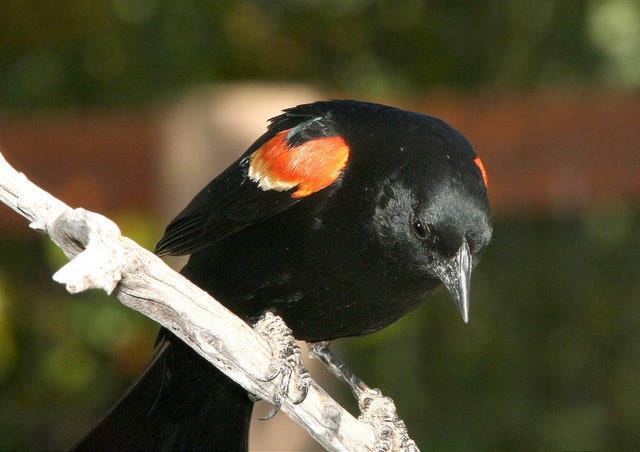By Margo Hearne
Rare birds come through Haida Gwaii regularly. Most fly in from Asia, including the Rustic Bunting that appeared in Port Clements this winter. A Spotted Redshank showed up in Delkatla last spring; the last time I saw one was during a visit to one of the Shetland Islands in Scotland in 1990.
Now the tables are turned. A Red-winged Blackbird, one of the most common birds in North America, recently landed in North Ronaldsay, a remote Scottish island. It caused a panic. According to published reports the bird “has thrown British birdwatchers into a frantic race to throng north before it’s too late… They have chartered at least four airplane trips to the island with as many as 12 other private aircraft making the journey purely for bird reasons… The island is now so packed with birdwatchers that the bird observatory there has had to begin corralling the visitors into designated areas and try and flush the bird towards them.”
Many will never see the bird, but they are spending big money to get there. Could we see such a furor over a rare bird here? Possibly. A few years ago, a Common or Eurasian Crane arrived in Delkatla Wildlife Sanctuary with a flock of Sandhill Cranes. Unknown to us, it had stayed around for a few weeks (unlike most rare birds that blow away on the next gust of wind). Canadian birders wanted to see it, but it seemed to have disappeared completely. We all thought it had left but it had simply moved away from the sanctuary and wandered off into the dunes; it resurfaced a few weeks later.
Many birders might not have come to find it anyway. It’s cheaper for folks from the U.S. to fly to Alaska and find rare birds than to come to Haida Gwaii. They consider the cost-per-bird (CPB) factor and don’t bother. Canadians, on the other hand, might have shown up if they had known the crane was still around, but nobody knew.
Still, it’s worth considering the possibility of ‘destruction by birder’ that might occur when rarities show up here. Birders are not all conservationists; they are as competitive and destructive as other user groups. So how did the blackbird get to Scotland? Speculation is rife. Did it hitch a ride on a trans-Atlantic freighter? Was it blown across the sea? The latter is most likely. Birds fly thousands of kilometres annually and this one was probably caught in a wind that blew it the wrong way. It might survive or it might be trampled to death by the herd!
Most of the nesting birds have now arrived on island for the summer. Swainson’s Thrushes, usually the last to arrive, will be calling from the bushes shortly, Hermit Thrushes have been singing for weeks, Pacific-slope Flycatchers are on the nest and Barn Swallows are joining the Tree Swallows as they whip through the air. So I’m told. I’m in semi-tropics again and watching Little Blue Herons, Snowy Egrets, and Brown Pelicans feed in the blue bay waters. It’s lovely but hot. The Tampa shrike chicks have fledged and are learning to fend for themselves and mockingbirds sing first thing in the morning and last thing at night. Birds know when they are home. hecatebird@gmail.com
